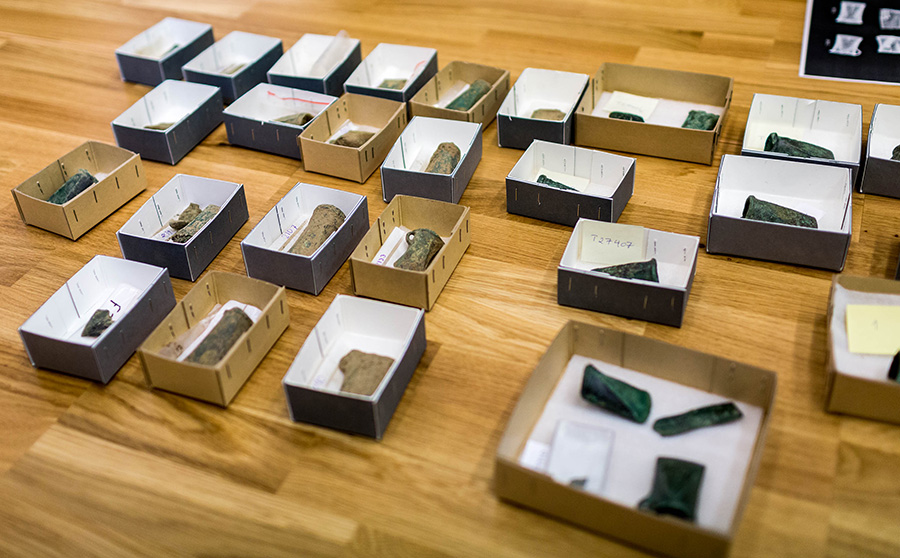Thanks to the curiosity of siblings Joakim and Jørgen Korstad and their metal detectors, a large cache of late Bronze Age artifacts have been uncovered in a field east of Trondheim.
In January the pair made the first of the discoveries—nine axes, a spearhead, casting mold and fragment of what is likely a bronze lur (a horn-shaped wind instrument). Quickly alerting archeologists with the Norwegian University of Science and Technology, the brothers returned in April with archaeologists Merete Moe Henriksen and Eirik Solheim in tow. After the second search the total number of Bronze Age objects found in the field in Hegra has climbed to 30.
“The 24 axes are a particularly special part of this discovery. There have never been so many axes in a single deposit before in Norway, and they’re rare in Scandinavian context,” said Henriksen.
Eager for answers, the research team hopes to complete an additional excavation of the field this fall to determine why the hoard was buried 3,000 years ago. “There may have been religious reasons linked to a sacrifice, or they might have been cached temporarily, with the intention of recasting the metal later. This was a known practice in the Late Iron Age,” Henriksen noted.
To view photos of the collection, visit https://goo.gl/ydTvBy

